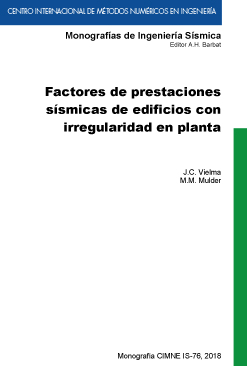Factores de prestaciones sísmicas de edificios con irregularidad en planta
FREE!
Editorial: CIMNE
Year of publication: 2018
Pages: 146
Editorial: CIMNE
Year of publication: 2018
Pages: 146
Description
Some residential buildings are irregular, having plants with entrances, fact which can worsen their behavior during potential seismic events. They can present demands that are much higher than their design capacity. The objective of this monograph is to study the seismic performance factors of buildings by applying the FEMA P695 methodology to a set of regular and irregular structural configurations with and without incorporating closure beams in their entrances. The case studies consider low-rise reinforced concrete buildings located in high seismic hazard areas. The structures are analyzed, considering the hypothesis of flexible diaphragm, in the linear range (using the Robot Structural Analysis computer code) and in the nonlinear range (using the SeismoStruct 7.0.3 computer code); both are based on the finite element method. The seismic response of the structures is evaluated by performing nonlinear pseudo-static analysis and incremental dynamic analysis (IDA). It is worth noting that the response of the buildings with entrances by applying the pushover analysis requires specifying certain rules of application, which are proposed herein. The performance point is calculated by applying the extended N2 method, which is especially applicable to buildings with irregularities in plan considering the effect of the higher modes of vibration. This allows obtaining the seismic response of the buildings to earthquakes similar to those of the seismic code. The displacement corresponding to the performance point allows making evaluations by means of the method of the quadrants and the damage index indicates if the structure is fragile or ductile. In addition, an alternative method is proposed to obtain the ductility and factors such as the torsional irregularity index, which is a dimensionless coefficient that characterizes the structural response and relates it to the existing irregularities. Comparisons among structures with different irregularity in plant are also made considering their fragility curves. The R coefficient is adopted according to the current regulations applying FEMA P695 and a new value of R is established by using the IDA curves obtained from the nonlinear analysis.
Additional information
| Year of Publication | 2018 |
|---|---|
| format | Monograph |

